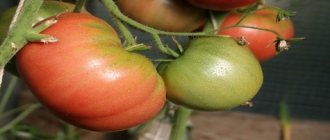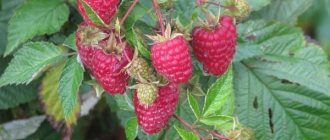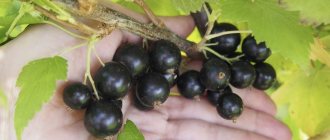History of the origin of the species
The ground cover rose Bonica is a relatively young variety - it was bred about thirty years ago, in 1985. This species belongs to the Floribunda family, obtained by crossing tea, muscat and polyantha roses at the beginning of the 20th century. In total, there are more than sixty varieties of Floribunda.
The unusual name, Floribunda, means “blooming abundantly.” It appeared in the middle of the last century and perfectly illustrates the flowers of this variety.
Rose blossom
Bonica is known for its luxurious flowering. If it is cared for in compliance with the necessary rules, the rose will delight viewers with beautiful pink inflorescences.
Rose Jubilee of the Prince of Monaco (Jubile du Prince de Monaco) - what kind of variety is it
Flowering begins in early summer and lasts for several months. The dormant period begins in autumn and ends in early spring.
Important! It is necessary to increase watering during bud formation and during the flowering period. At this time, fertilizing is done with potassium and phosphorus fertilizers.
What to do if it doesn’t bloom, possible reasons
This happens when the rules of care are violated.
Possible reasons: insufficient lighting, air stagnation, lack of nutrients in the soil. If normal care is restored, it will help Bonika regain her former health.
Rosa Bonica: description
Because of their original appearance, the plants are rightfully considered one of the most beautiful varieties of roses. This is a fairly dense spreading bush, the height of which varies depending on the climate - within 80-120 centimeters. If you trim it to half height early, it will be fluffier. As a result of this process, the bush receives a shape close to round. The leaves are a rich dark green color, relatively small in size, but dense.
It has rather small flowers - only 5 centimeters in diameter, but their beauty more than compensates for their small size. The edges of the Bonika rose are light pink, close to white, and the middle is a richer pink color.
The opened bud quickly fades in the sun, so soon the center of the flower becomes the same as the outer petals. The latter, by the way, have a wavy shape. As a rule, from 5 to 10 buds appear on one branch during the first flowering, and then there is a constant and almost imperceptible renewal. Thus, the fading ovary is replaced by another. The rose Floribunda Bonica blooms all summer - right up to September.
When the flowers fall, they are replaced by bright red or orange fruits that last until spring. This is also quite beautiful, but it is fraught with weakness of the next flowering - after all, the bush had to expend a lot of effort in order to maintain the development and life of the fruits all winter. Like other varieties of Floribunda, Bonica has practically no smell - you can barely catch the subtle apple aroma emanating from this flower.
Features of care
The rose bush needs annual pruning. It is best produced in the spring. All shoots are shortened by about 30%. If Bonika grows stems too quickly, shortening up to 50% is allowed. Along the way, remove frozen, broken and dried branches.
Due to its rapid growth, the rose needs regular feeding. Organic fertilizers are especially important for it, which can be applied to the bush at any time: in spring, summer and autumn. It is better to apply inorganic fertilizers three times during the growing season:
- in the spring immediately after pruning;
- in the summer before mass flowering;
- at the end of summer to strengthen the bushes before the dormant period.
The faded rose produces bright red fruits. The plant spends a lot of energy to form and ripen them, so flowering stops. In order for the bushes to continue to delight with lush flowers, the fruits must be picked.
Bonica loves regular watering. It is watered every week, pouring 20 liters of water under the bush. In dry times, the soil is moistened once every 3-4 days. In autumn, watering is stopped, but if it turns out to be dry, 10 liters of water are poured into each hole weekly. Moisten the bush abundantly before the onset of frost.
If a plant is sick with black spot or powdery mildew, it needs some help. To do this, in addition to treating with fungicides, you will need to remove the affected leaves and stems. And to prevent diseases in the future, the bush is thinned out, removing unnecessary shoots (especially those that grow inward). This promotes better air exchange in dense planting conditions.
Plant care
In order for any plant to please the eye for as long as possible and be healthy, it must be properly cared for. Rosa Bonica is no exception. She has an extremely positive attitude towards the warm rays of the sun; it is because of their abundance that the rose is able to bloom for so long. Therefore, you need to take this feature into account when thinking about a place to plant shrubs. In the shade, Bonika will also grow, but much more sparingly. Much attention should be paid to the air: if it stagnates near the Bonika rose, then black spots may appear on the flower. Therefore, it is important to maintain ventilation. Floribunda Bonica does not tolerate stagnation of moisture in the soil. The soil should be well fertilized (fertilizing is carried out at the beginning and end of the season) and not overwatered.
Every spring it is worth trimming the bush by about a third, but some gardeners do it by half. Dry, broken, frozen branches should definitely be destroyed. It is recommended to remove those shoots that grow inside the bush.
Planting and care
The choice of planting site depends on the characteristics of the variety. Rose "Bonica" can grow and develop both in open ground and in containers. It beautifully decorates borders and looks good in the background. Plants of the floribunda family love warmth and sunlight. A two-year-old seedling is suitable for planting. Rose "Bonika" develops better if grafted onto a rootstock.
Features and rules of landing
The plant is planted in the spring. First, a hole measuring 50x50x50 cm is prepared, which must be well watered. The soil must be fertile and loose. Bushes are planted at a distance of 80 cm at the rate of no more than 5 seedlings per 1 square meter. m.
To prepare the hole you will need:
- sand;
- humus;
- peat;
- half a bucket of fine clay;
- 25 g bone meal;
- 30 g of superphosphate fertilizers.
The rose is planted in a hole, spreading the roots evenly. The grafting site is buried 5 cm below ground level. The roots are covered with earth and sawdust to retain moisture longer.
Watering and fertilizing
The future beauty of a rose depends on its care. In the first year, in order for symmetrical branches to form, it is necessary to pinch the shoots above the fourth leaf. Such events promote rapid growth and increased winter hardiness. After pinching, the bush is watered with infusion of chicken droppings. Before the first flowering, fertilizing with sodium humate is carried out.
Landing rules
It is recommended to plant the plant in the ground in the spring. If you purchase it in a store, it is important to check that the seedling has at least three shoots. The hole for the future bush should be no more than 50 centimeters in all three parameters (length, width, depth). You should place a special fertilizer for roses at the bottom, and then add a little soil. The bush itself must first be watered and carefully removed from the pot so as not to damage the roots. Then it is placed in the hole so that the root ball is flush with the ground. Next, you need to fill the voids with soil, compact it, make a “fence” out of it and water the plant.
When planting several bushes, you must maintain a distance of approximately 80 centimeters between them. In addition, wormwood, clematis, conifers, and lavender feel great and look harmonious next to the Bonica rose. The latter, by the way, perfectly repels aphids.
Diseases, pests and ways to combat them
In rainy weather, black spot infestation is likely. It can be detected upon inspection in the form of black dots on the leaves. For treatment, first remove the infected greenery and burn it. As a preventative measure, pruning shoots to increase air access to the plant can help.
Rose Bonica is susceptible to aphid attack. If these insects are detected, it is recommended to give the plant a shower and wash off the pests from the leaves. Spraying with liquid alcohol soap will help prevent repeated pest attacks. Insecticides may be used for severe aphid infestations.
This luxurious rose bush has gained wide popularity. Beautiful roses do not require too much care. If you follow the growing rules, the Bonika rose will delight the owner with its flowering.
Diseases
Rose Bonica has increased resistance to diseases, but it is still susceptible to some of them. For example, we have already talked about black spots that can appear due to humidity or bad air. Thickening of branches also contributes to the occurrence of this infection. If this happens, these leaves must be immediately removed from the bush and burned so that the infection does not spread to other plants. Bonica is also susceptible to aphids. In this case, you need to direct a stream of water at the bush, and then treat it with a solution of alcohol and liquid soap.
In general, caring for the Bonika rose is not too difficult, but it will repay it with such beauty that previously could not be found in the garden. All the laudatory reviews for this flower are deserved, as are the numerous awards received by this variety. Still, it’s not for nothing that the rose is considered the queen of flowers - Bonika absolutely proves this!
Pros and cons of the Bonika variety
Advantages:
- Large brushes of 5-10 colors;
- With proper pruning, the bush takes on a neat spherical shape;
- Long lasting, abundant flowering;
- High frost resistance;
- Does not require intensive care;
- Bright fruits appear in autumn.
Flaws:
- Flowers fade in the sun;
- No aroma;
- Low resistance to diseases;
- Afraid of wet weather.
Description of the variety
Rose "Bonica 82" appeared in 1981. It was bred by the breeder Meiyang. After that, it became the most popular among gardeners and is often used in landscape design.
This attention is due to the fact that the culture grows surprisingly quickly, blooms for a long time and luxuriantly.
Bonica is a crop belonging to the Floribunda group. All plants in this group are healthy, long-flowering and frost-resistant. Despite the tenderness of rose inflorescences, Bonica is hardy.
It adapts well to harsh conditions and is not demanding on the condition of the site, even if it is not at all suitable for its healthy growth.
The growth of the bush is influenced by the climatic conditions in which Bonica grows. It ranges from 80 to 120 cm. The base tier of a young bush is the lower one. In the active growth phase, it throws out heavy branches strewn with flowers to the sides. Further, after systematic pruning, the rose bush begins to take on a spherical shape.
There is little greenery on the bush; it is polished and dark green in color. The inflorescences cannot boast of size. Their diameter is only 5 cm. The middle is bright pink, the same petals that are closer to the edges are pale pink, almost white.
After the bud has fully opened, the petals, having faded in the sun, gradually turn white. Then the entire inflorescence acquires a delicate light pink color. Each brush contains from 5 to 20 buds.
Bonica blooms very abundantly and occurs at the beginning of summer. Towards the end of the season, the number of flowers decreases slightly, but the plant continues to bloom until the end of September.
It is better to pick off faded inflorescences immediately.
If they remain, they will produce red-orange berries that will remain on the branches until spring. Then the flowering will not be so violent, because the plant will use all its strength and juices to bear fruit.
Reproduction methods
"Bonica 82" can be propagated by cuttings or grafting. Usually the first option is used. It is better to carry out work in early spring. Cuttings are harvested when the stems become woody.
Algorithm of actions:
- Prepare cuttings. The top cut is straight, the bottom at an angle of 45°.
- Prepare holes at intervals of 0.3 m. Deepen to 0.15 m.
- Germinate cuttings under film.
Care consists of watering, fertilizing and airing. The flower is transferred to a permanent place after 3 years.
Rose Royal Bonica encyclopedia of roses
We are now accepting orders for the Spring 2020 season.
Our website presents the best varieties of ROSE and GRAPES seedlings. We hope that not a single variety will be left without your attention.
Attention! Contest! added to the site:
We are announcing a competition for the best photo and the most informative comment! Details can be read here
Bush height - 100-150 cm;
Flower diameter - up to 8 cm;
Resistance to frost and disease - high;
Flower growers unanimously call this rose variety “problem-free,” and the reason for this is its high resistance to disease, excellent frost resistance, rain tolerance, and excellent flowering in the scorching sun. It is interesting to note that in a study of the resistance of rose varieties by the Montreal Botanical Garden (September, 1998), Royal Bonica showed one of the best results, since the damage rate was 0% - 5%. Lance Walheim, in his book “Roses for Dummies,” focuses on the sustainability and unpretentiousness of this variety, giving its description and characteristics.
Royal Bonica, in addition to its sustainability, captivates rose growers with the beauty of both the individual flower and the delightful flowering of the bush as a whole. The delicate, beautiful flowers of this rose consist of 60 or more wavy petals and have a discreet, subtle pink color that is pleasing to the eye. Often these flowers are collected in brushes of 5 pieces. Particularly impressive is the incredibly abundant first flowering, during which the bushes (100-150 cm high and about a meter wide) are completely covered with beautiful flowers collected in brushes. Since the bushes form densely, spring pruning can be done to half the height of the plant.
You should definitely pay attention to the fact that the flowering is not only abundant, but also long lasting, throughout the entire season, and it is important that Royal Bonica is one of the first to bloom
Having this variety in the garden, you can always cut a bouquet of excellent Royal Bonica tassels and enjoy it in a vase for a long time, since they last a long time when cut. It is worth emphasizing that this rose is not suitable for industrial cutting as its shoots are short.
Concluding the description, it should be noted that Royal Bonica is a bud mutation of the Bonica variety, which was discovered by Alan Meyland, son of Francis Meyland in 1993 in France and its working name is MEImodac.
You can learn more about the Royal Bonica rose variety in the ABC of Rose Varieties.
Features of cultivation
To grow a bush with dense foliage and an abundance of flowers, you must adhere to basic planting rules.
Selection of seedlings
It is recommended to choose seedlings with young annual roots. Plants with a dried root system are soaked for a day before planting. Preference should be given to grafted seedlings in pots with at least 3 shoots.
Where and when to plant roses
In Russia, planting of floribunda roses (including Bonika 82) is carried out mainly in the spring. In the south, planting is allowed in September-early October. The soil should be light, low-acid, with a fertile layer of at least 50 cm.
For planting, open, well-ventilated, sunny areas are selected (darkness negatively affects the density of the crown) without accumulation of water.
Landing technology
Planting consists of the following stages:
- Dig a hole 40-50*40-50*40-50 cm.
- Fertilizer is applied and the soil is moistened abundantly.
- A seedling with a lump of earth is placed in the ground (the distance between plants is 50-80 cm).
- The voids are filled with earth.
- The soil is moistened (not at the root).
- Mulch with peat or straw.
Helpful information. Neighborhood with lavender will save flowers from aphids and other pests.
Pests and diseases
The main problem of Bonika 82 is black spotting, which reduces decorativeness. The disease manifests itself as rounded purple-brown spots on the leaves, which then merge. Rose shoots may be affected. The fungus persists in them and plant debris.
Control measures:
- Remove and burn affected leaves.
- Spray the rose with effective preparations “Profit”, “Topaz”, “Skor”.
To prevent black spotting, you need to add wood ash to the soil around the bushes and regularly get rid of thin branches that thicken the plantings.
"Bonica 82" with black spot continues to bloom, but its decorative value is reduced
Of the pests, the main enemy of the rose is aphids. It multiplies quickly in April-May, feeds on plant juices, and transmits diseases.
There are several methods of struggle:
- Collecting by hand or rinsing with water under pressure is appropriate for small numbers of insects.
- Spraying - soap solution (1 tbsp per 1 liter of water), infusion of stinging nettle.
Aphids are repelled by the smell of lavender, which can be planted among roses.
Comment! To prevent diseases, stagnant water must be avoided. For this, loosening, mulching and compliance with watering standards are important.
How to choose the right place to plant
The place for planting any plant should be chosen based on its characteristics.
If we recall what was written above, we should highlight such features as frost resistance, long flowering, and good health.
In addition, rose bonica loves sunlight . It is thanks to the sun that it can delight with its flowering for so long. Therefore, it is advisable to choose an open place to plant this wonderful flower.
This is interesting: How to find out why irises do not bloom and how to solve the problem
If you plant Bonica in the shade, then, of course, it will grow and develop, but such a gorgeous “crown” will no longer be possible to see.
We also must not forget that the plant can react differently to humidity. Regarding bonika, it is worth saying that such a bush should under no circumstances be planted in a place with stagnant air. If the rose ends up in such a place, then black spots cannot be avoided.
Tip: choose a place with good ventilation. The same must be said about the soil: roses from the floribunda family do not like it when water stagnates in the soil. Therefore, you need to carefully fertilize the soil and not overdo it with watering.
History of selection
"Bonica 82" (Bonica 82) was launched in 1981. The author of this variety is Marie-Louise Meillant. The French company of this family specializes in the production and selection of roses. Every third such flower in the world is grown in its nurseries.
Bonika 82 has a rich selection history. About 2 dozen other varieties were used to create it. The name of the mother plant is unknown. It was obtained by crossing an evergreen rose hip and a rose hybrid, Mademoiselle Marthe Carron, bred in France in 1931.
The source of pollen for the creation of “Bonica 82” was the floribunda “Picasso”, obtained in 1971 in New Zealand. Its flowers are dark pink in color and have a white center. To breed this variety, a hybrid of the rose “Spin” (Spinosissima) and about a dozen floribundas were used.
Comment! Another variety, bred by Meilland in 1957, is also called Bonica. Its color is orange-red.











